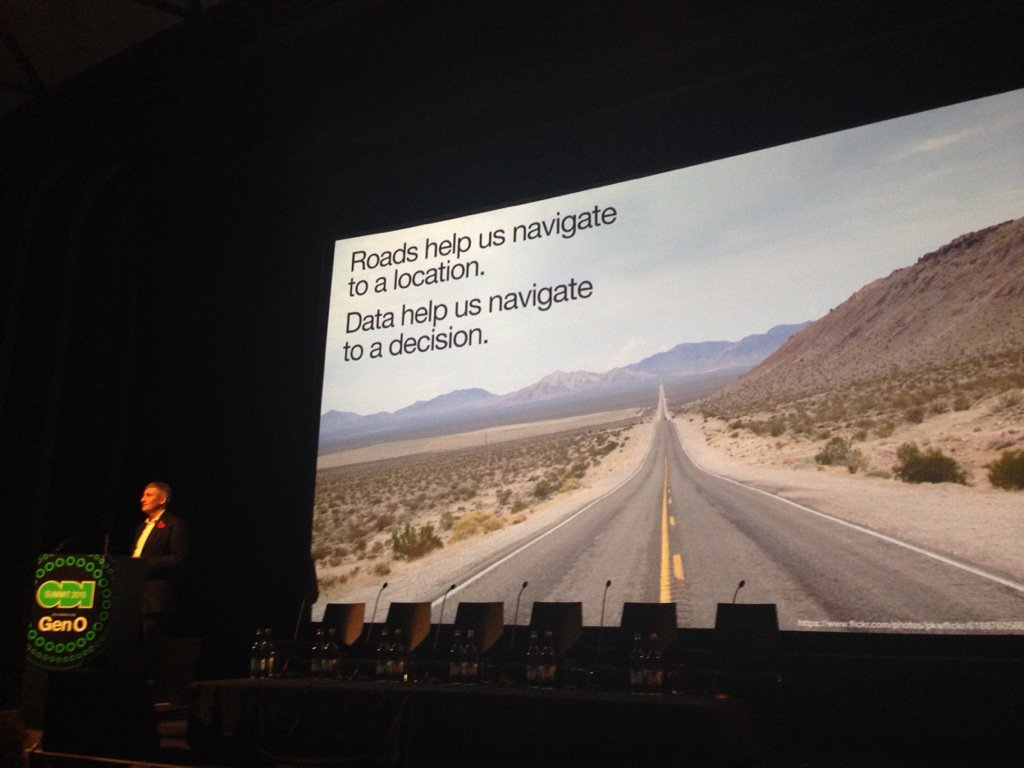Question 1: What are the main challenges and risks facing intermediate cities in their quest towards managing a rapid growth? and What would you propose to address those challenges and/or minimize the risks?
What are the main challenges and risks facing intermediate cities in their quest towards managing a rapid growth? and What would you propose to address those challenges and/or minimize the risks?
This discussion is now closed. Thank you for your participation.
Moderators:
-
 Claudio Torres Slum Upgrading Consultant, Housing and Slum Upgrading Branch. UN-Habitat
Claudio Torres Slum Upgrading Consultant, Housing and Slum Upgrading Branch. UN-Habitat -
 Pireh Otieno Human Settlements Officer, Urban Basic Services Branch - UN-Habitat
Pireh Otieno Human Settlements Officer, Urban Basic Services Branch - UN-Habitat -
 Kulwant Singh Regional Advisor - UN-Habitat
Kulwant Singh Regional Advisor - UN-Habitat -
 Marcus Mayr Urban Planner, Climate Change Planning Unit, UN-Habitat
Marcus Mayr Urban Planner, Climate Change Planning Unit, UN-Habitat -
 Edmundo Werna Head of Unit at Sectoral Policies Dept. ILO
Edmundo Werna Head of Unit at Sectoral Policies Dept. ILO
What are the main challenges and risks facing intermediate cities in their quest towards managing a rapid growth? and What would you propose to address those challenges and/or minimize the risks?
Thanks to everyone that has participated in this discussion, it has been a pleasure to read all of your comments. Many topics have been addressed about intermediate cities: regulation, participation, mobility, public space, city´s roles, and governance, among others. Hopefully the meeting in Cuenca will help to evidence, discuss and propose more alternatives for the future of our cities!
The Culture Committee of United Cities and Local Governments (UCLG) highlights the importance of integrated approaches to local sustainable development, which recognise the need to include a cultural dimension alongside the social, economic and environmental components. This also applies when analysing the challenges and risks faced by intermediate cities in a context of rapid growth. In particular, the following elements arise as particularly significant in these contexts:
- The need to be aware of the potential negative cultural impacts of rapid urban growth, e.g. as regards the loss of valuable cultural elements. In this regard, the recently-adopted document Culture 21 Actions suggests that ‘cultural impact assessment’ tools should be developed and training provided to support their implementation.
- The need to adequately plan for the availability and accessibility of cultural facilities (e.g. libraries, art schools, community centres, museums), including their decentralisation as well as the suitable allocation of resources for their sustainable use.
- The need to consider the importance of public space for civic and cultural use, given the significant impacts of public space in terms of citizenship development, social interaction and mutual recognition.
Additional information and further ideas about these issues may be found within Culture 21 Actions, particularly under Section 7, which focuses on ‘Culture, Urban Planning and Public Spaces’.
These issues are very relevant. They bring a very interesting dimension: intermediate cities as expression of the diversity of human cultures. And the challenges that are identified are very concrete as well. Rapid growth often happens at the expenses of adequate public spaces (in quantity and quality), including cultural facilities. At the same time, urbanization is a process of cultural transformation,. How to combine cultural preservation with cultural innovation?
I suspect many intermediate cities are somewhat handcuffed by building codes determined at the national level and regional (i.e. state level), also with regard to land-use plans – which affects not only housing but major infrastructure such as airports and industrial complexes (shipping, trucking etc.). Where development is slated for high-risk areas there could be a greater attention paid in protecting local administrations from litigation (by large trans-national development corps), especially where LGA’s or local gov. are unable to enforce a higher standard of building code with regard to flood protections, bushfire protection, heat island management (i.e. when building roads with wide verge and installation of bioretention flood defenses on verges or in swales, ensuring tree cover and green walls are part of large projects, ensuring tri-generation/solar or other renewables are designed in early on).
These kinds of progressive ecologically aware infrastructure solutions are being retrofitted at massive cost, but if planning guidance could require such installations be designed in earlier in the development process it would ease the financial burden on retro-fitting for local governing bodeis and private owners – especially a consideration for large scale low cost housing developments. Some of the planning guidance for the development of climate resilient estate in the UK lays out some professional practice and property owner guides on this but there is no statutory obligation for developers to adhere to this when designing large housing blocks, housing estates, industrial estates, shopping centres and the like, espcially in rapidly expanding areas. Too often where we see successful local regulation or enforcement these are overturned in the higher courts leading to future vulnerabilities of no concern to developers who have already sold the retail, industrial, residential floor space and moved on to the next project. In this case the risk is passed onto the end-user at no cost to developers, this is a big challenge to overcome for rapidly urbanisating areas; one worthy of discussion by this forum.
Dear Peter, this is really an interesting point. The dilemma is often between regulations that impose too much to local governments and private developers and regulations that provide too little guidance and constraints. Which type of ‘contract’ between central and local govenment can ensure more accountability from both sides? It is possible to solve the dilemma in a more consensual way?
Principales Desafíos y Riesgos:
1. Repetir los errores del crecimiento de las grandes ciudades en América Latina
2. Crecir de manera desordenada sin una planifiación en etapas en donde se consideren límites específicos en cuanto al perímetro de crecimiento.
3. Crecer sin servicios, equipamiento e infraestructura necesarias para el rápido crecimiento demográfica que están teniendo
4. Finanzas públicas poco sustentables, debido a una falta de actualización del catastro y los impuestos prediales
5. En algunos casos escases de agua, así como el saneamiento de la misma.
6. Falta de una movilidad moderna e integrada con otros sistemas de tranporte
7. Escaces de infraestructura educativas y mano de obra calificada para atraer inveriones en nuevos sectores productivos.
8. Procesos de metropolización descontrolada sin que las autoridades se ponga de acuerdo.
9. Un riesgo de crecer de manera segregada en donde haya crecimiento de la vivienda pero en donde los estratos sociales no se mezclen.
10. Crecer extendidamente, lo cual genera altos costos y muchos y largos viajes para la personas.
Que hacer frente a estos desafíos y riegos?
1. Actualizar el marco jurídico para incorpoar nuevas formas de planeación y ordenameinto territorial que permitan un mayor control del crecimeinto con mejor calidad. Lo cual requiere adoptar las mejoras prácticas en ciudades intermedias en América Latina. Incoporar temas como la sustentablidad del desarrollo urbano, nuevas formas de gobierno, recuperación de plusvaías, movilidad sustentable, etc. Ello deberá ir en congruencia con la política nacional de promoción de las ciudades intermedias como nuevos nodos de cremiento económico y cultura, un un marco más general de desarrollo regional y nacional.
2. Actualizar los instrumentos técnicos de la planeación. Generar los instrumentos técnicos a nviel nacional y local, que permitan un crecmiento ordenado y se marcque los límites y formas del crecmiento urbano. Por ejemplo perímetros de contención, etapas de crecimiento, densidades, etc. Combinar la planeación urbana con el ordenamiento territorial, para ver difente escalas. Vincular y armonizar el ordenameinto ecológico con el territorial. La planeación metropoliana deberá ser una prioridad. para lo cual deberán de generarsee instantción de planeación metropolitana. Deberá de haber lineamientos nacionales en donde se fortalezcan la urbanización más compacta y menos extensiva y desordenada a través de la poltícas de subsidios y otros.
3. Fortalecer los mecanismos de gestión y participación ciudadana. Impulsar neuvas formas de getión a través de la participación de la ciudadanía en donde se puedan identificar las necesidades y perspectivas de la población y el tipo de ciudades que quieren y esperan vivir.
4. Crar nuevas formas de gobernanza metropolitna. Habrá que buscar nuevos mecanimos para adminstirar y gobernar las ciudades intermedias que están teniendo un proceso de metropolización y conurbasción a través de nuevas formas de gobierno. Cada país deberá encontrar las formas más idoneas para hacaerlo.
5. Mejorar la movilidad urbana. Un gran reto es hacer ciudades donde se fortalezca la movilidad integra pero sobre todo que privilegie el tranporte público y la movilidad no motorizda.
6. Combatir la corrupación . Adecuar la legislación penal para incluier el delito de “atentado contra el desarrollo urbano ordenado” en donde se tipifique este delito, sobre todo cuanto no se respetan los ordenamientos específicos y la nortamtiidad, ya que muchas veces se dan permisos de construcción y desarrollo, sin respaldo jurídico y técnico.
En ocasiones los habitantes de las ciudades intermedias idealizan a las grandes ciudades como lugares “desarrollados”, anhelan las grandes autopistas, los malls, los conjuntos habitacionales cerrados de lujo, entre otras cosas. Por ende presionan a las autoridades de turno para lograr este supuesto “desarrollo”. ¿Cómo conseguir entonces el apoyo ciudadano para que las ciudades intermedias mantengan las características que las diferencian de las grandes metrópolis?
To be a dim star OR part of a bright constellation? a apparently false dilemma faced by a significant portion of intermediate cities.
Although this dilemma denotes a privilege where groups of cities can gain together a deeper understanding of their populations as also greater efficiency in resource consumption, they to face real challenges in an age where we dispose of overwhelming amounts of data, a rich set of tools and growing skillful communities.
Paramount to the wider array that make it to everyday headlines, I’d highly place the challenge faced by those groups of intermediate cities in a renewing their perception of the current standing of the divide between political wisdom and technical understanding.

Dear Jorge: You state that one of the biggest challenges for intermediate cities is: “renewing their perception of the current standing of the divide between political wisdom and technical understanding”. Do you think that citizen participation could help as a bonding instrument between those two?
Dear Carla,
I wouldn’t aim at overcoming the mentioned divide between political wisdom and technical understanding, in matter of fact I believe that it’s a “healthy” divide – the old Politics-Administration Dichotomy.
Certainly citizen participation is fundamental in achieving such wisdom and understanding, but a profound and continued participation down to the design of policy and our democratic tools and instruments (many times fenced-off in our bureaucratic towers).
To a large extent the shift in the divide that I mentioned derives from the digital transformation underway where data produced by citizens can lead to decisions that better address their needs. As stated yesterday by @agentGav at the #ODISummit: “Roads help us navigate to a location. Data help us navigate to a decision”. Anyhow some questions arise: what Data? is it relevant and rigorous enough? Which factors do we consider and how do they fit in their relative weighting in the decision process? and what about the ethics? does this mean that digital transformation gets political gut feeling completely out of the way?
To get those concerns out of the way citizen participation is the key reply, as also in keeping a healthy balance in the Politics-Administration Dichotomy.

Capacity of planners is really an important point, particularly for intermediate cities. In many countries there is no sufficient number of planning professionls and no mechnaisms to access updated information or training . What are schools and universities (and planning associations) doing to produce more and better graduates or upgarde the skills of other human settlements professionals (surveyors or engineers for instance) who are often the ones in critical roles in the planning process locally?
My opinions regarding the questions focus on the Government abilities to capture the consequences of Rapid Growth.
The first problem is understanding the growth and global pattern of the growth. The current growth definition has high correlation to urban landfill transformation, high rise building and mega-projects of infrastructure. The definition of “RAPID GROWTH” seems to be threatening the government of intermediate cities, so they are put under pressure to apply immediate actions with less understanding of planning principles neither sustainability concepts. The planning framework such as legislation, planning instruments and development tools will probably put an only model of development; Build first, Preserve later. This potential matter is landed to the first risk; the failure of planning.
The second challenge is the integrity of planning authorities. It is important to realise that when the rapid growth is acceptable as emerging issue, the tsunami of development will be happening to the intermediate cities. In the same time, however, the tsunami of skilled planning officials and planners are contrasting. The discretionary power of the consent authorities is likely to serve private sector rather than the public interest due to the vast publication of planning instruments versus major development application around the world. The risk of this challenge is the abuse of power through development approval.
The recommendations are first, understanding the core of the governments, communities and planning pattern of intermediate cities regarding the Rapid Growth issue before making a planning projection with potential hidden agendas. The second is improving the planning and management skills of the consent authorities in urban planning and development.
When you talk about the “failure of planning”, universities have a great responsibility in the capacities and skills taught to future planning officials and authorities. Some architecture schools keep teaching the same contents that were taught decades ago in urban planning, which relate basically to modern urbanism. Do you think this happens in Australia too?
Thank you, Hermida, for the feedback.
The Planning contents in Australian Architecture Schools are going along with the development of urban studies and global issues as well. Melbourne and Sydney as the regular in the World Livable Cities list are indicating the significance of planning discussion and practices in Australia.
There are two the questions regarding the “the failure of planning’.
Firstly, what is the majority of education background of the current decision maker is it planning or something else?how important the planning background influencing the strategic planning and development?are the legal, political and economy solution are still the first solution for urban development conflict rather than planning solution?
Secondly, how the sophisticated planning theories are fully fitted to the existing circumstances of intermediate cities?how long the out-dated theories took place in forming the Developed Cities today? Is it still relevant in some ways or not at all?
I think, these several questions are likely to discuss in the context of intermediate cities.
Welcome to the dialogue on Intermediate Cities! Intermediate cities in many countries grow fast and absorb a large share of the country’s new urban population. Managing rapid growth requires capacities and adequate planning instruments. It also requires rapid response and at scale. In the absence of an adequate strategy, growth will result in sprawl, occupation of areas exposed to risk, backlog of services and hindered connectivity and will create disfuctional urban areas and compound poverty and exclusion. Identifying adequate strategies is therefore critical to sustainable urbanization. What are the options?

Dear Colleagues,
Regarding the subject:
What are the main challenges and risks facing intermediate cities in their quest towards managing a rapid growth? Foster harmonic economical, social and environmental relationships in a scenario with enhanced propensity to conflicts due to growing demographics.
What would you propose to address those challenges and/or minimize the riscks? We believe that it is fundamental to promote the development and management of cooperation networks that enable effectiveness, sustainability and peace (both internal and external). The formation of cooperation networks for systemic action allows the integration of the three sectors (public, private and civil society) and the whole community. This context favors participative and representative democracy and provides Harmonic and Sustainable Development (HDS).
Increasingly, it requires the cooperation of every part. However, sometimes, when making planning and management of public policy, some people forget the importance of integration, too, with the Justice System. In case of ineffectiveness of public policy (often due to a linear actuation – not realizing the interconnections), the Justice System undoubtedly will intervene, directly affecting the course of development that we want (something that can be evidenced by example, the “judicialization of health”). So the System of Justice should participate in the cooperation network.
In order to act as such, we utilize the Systemic Planning and Management Action (SPM) on several prioritized foci (such as, for instance, the healthcare system). Through SPM Action, it is possible to enhance the convergences in detriment to eventual divergences.
Presently, we are developing the Systemic Management and Planning Action focusing on Sustainable Development Goals (SDGs) and on HABITAT III- HOW TO cooperate on the implementation and adaptation of the SDGs and HABITAT III directives to local contexts – attached. (further information on the documents available at the following website: rodrigoschoeller.blogspot.com.br. Mainly: 2010 publications in English and
https://rodrigoschoeller.blogspot.com.br/2012/01/um-mapa-no-caminho-map-on-way-english.html ). Should you wish to cooperate on our common mission, please submit a copy of that e-mail/document and/or the blog website (pgsistemicos.blogspot.com.br.) to your mailing list and/or send your suggestions to pgsblog@gmail.com
I hope that the documents, which are public domain, can contribute in some way.
Rodrigo Schoeller de Moraes,
Public Prosecutor,
Manager Strategic Projects of the Public Prosecutors Office/Public Ministry.
E-mail: rsmoraes@mprs.mp.br
and rsmoraes@mp.rs.gov.br
www.rodrigoschoeller.blogspot.com.br
Phones:
+ 55 51 9628-4254
+ 55 51 3295-1050